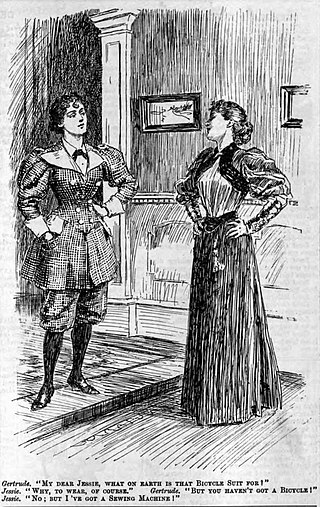
Victorian dress reform was an objective of the Victorian dress reform movement of the middle and late Victorian era, led by various reformers who proposed, designed, and wore clothing considered more practical and comfortable than the fashions of the time.
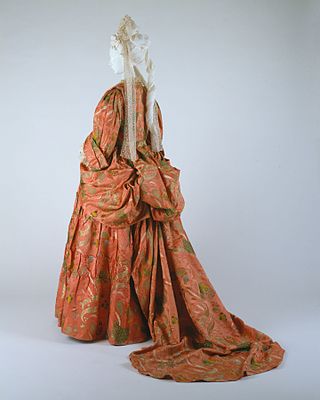
A mantua is an article of women's clothing worn in the late 17th century and 18th century. Initially a loose gown, the later mantua was an overgown or robe typically worn over stays, stomacher and a co-ordinating petticoat.

Panniers or side hoops are women's undergarments worn in the 17th and 18th centuries to extend the width of the skirts at the side while leaving the front and back relatively flat. This provided a panel where woven patterns, elaborate decorations and rich embroidery could be displayed and fully appreciated.

A stomacher is a decorated triangular panel that fills in the front opening of a woman's gown or bodice. The stomacher may be boned, as part of a stays, or may cover the triangular front of a corset. If simply decorative, the stomacher lies over the triangular front panel of the stays, being either stitched or pinned into place, or held in place by the lacings of the gown's bodice.

Fashion in the years 1750–1775 in European countries and the colonial Americas was characterised by greater abundance, elaboration and intricacy in clothing designs, loved by the Rococo artistic trends of the period. The French and English styles of fashion were very different from one another. French style was defined by elaborate court dress, colourful and rich in decoration, worn by such iconic fashion figures as Marie Antoinette.

Fashion in the period 1795–1820 in European and European-influenced countries saw the final triumph of undress or informal styles over the brocades, lace, periwigs and powder of the earlier 18th century. In the aftermath of the French Revolution, no one wanted to appear to be a member of the French aristocracy, and people began using clothing more as a form of individual expression of the true self than as a pure indication of social status. As a result, the shifts that occurred in fashion at the turn of the 19th century granted the opportunity to present new public identities that also provided insights into their private selves. Katherine Aaslestad indicates how "fashion, embodying new social values, emerged as a key site of confrontation between tradition and change."

The robe à la polonaise or polonaise is a woman's garment of the later 1770s and 1780s or a similar revival style of the 1870s inspired by Polish national costume, consisting of a gown with a cutaway, draped and swagged overskirt, worn over an underskirt or petticoat. From the late 19th century, the term polonaise also described a fitted overdress which extended into long panels over the underskirt, but was not necessarily draped or swagged.

Fashion in the period 1700–1750 in European and European-influenced countries is characterized by a widening silhouette for both men and women following the tall, narrow look of the 1680s and 90s. This era is defined as late Baroque/Rococo style. The new fashion trends introduced during this era had a greater impact on society, affecting not only royalty and aristocrats, but also middle and even lower classes. Clothing during this time can be characterized by soft pastels, light, airy, and asymmetrical designs, and playful styles. Wigs remained essential for men and women of substance, and were often white; natural hair was powdered to achieve the fashionable look. The costume of the eighteenth century, if lacking in the refinement and grace of earlier times, was distinctly quaint and picturesque.

A Brunswick gown or Brunswick is a two-piece woman's gown of the mid-eighteenth century.

A justacorps or justaucorps is a knee-length coat worn by men in the latter half of the 17th century and throughout the 18th century. The garment is of French origin, and was introduced in England as a component of a three-piece ensemble, which also included breeches and a long vest or waistcoat. This ensemble served as the prototype of the frock coat, which in turn evolved into the modern-day three-piece suit.
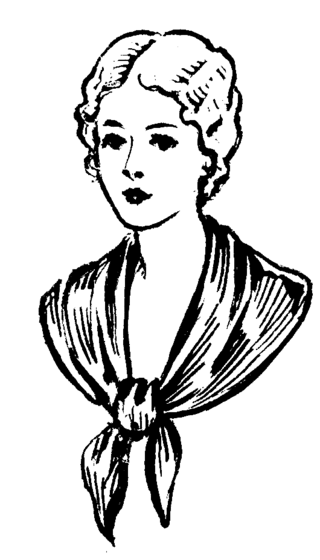
A fichu is a large, square kerchief worn by women to fill in the low neckline of a bodice.
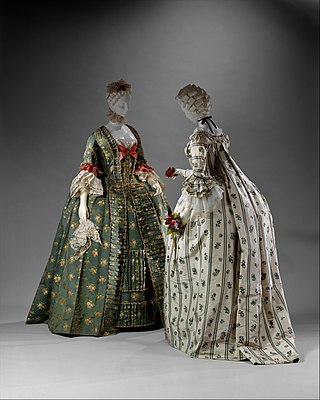
The sack-back gown or robe à la française was a women's fashion of 18th century Europe. At the beginning of the century, the sack-back gown was a very informal style of dress. At its most informal, it was unfitted both front and back and called a sacque, contouche, or robe battante. By the 1770s the sack-back gown was second only to court dress in its formality. This style of gown had fabric at the back arranged in box pleats which fell loose from the shoulder to the floor with a slight train. In front, the gown was open, showing off a decorative stomacher and petticoat. It would have been worn with a wide square hoop or panniers under the petticoat. Scalloped ruffles often trimmed elbow-length sleeves, which were worn with separate frills called engageantes.

The portrait of Mademoiselle Caroline Rivière was painted in 1806 by the French Neoclassical artist Jean-Auguste-Dominique Ingres, and today hangs in the Louvre.

Madame Moitessier is a portrait of Marie-Clotilde-Inès Moitessier begun in 1844 and completed in 1856 by Jean-Auguste-Dominique Ingres. The portrait, which depicts Madame Moitessier seated, is now in the collection of the National Gallery in London, which acquired it in 1936.

Baronne de Rothschild is an 1848 portrait by the French Neoclassical artist Jean-Auguste-Dominique Ingres. The sitter, Betty de Rothschild (1805–1886) had married her paternal uncle banker James Mayer de Rothschild and was one of the wealthiest women in Europe, and one of the foremost Parisian patrons of the arts. Her beauty and elegance were widely known and celebrated, and inspired Heinrich Heine's poem The Angel. For her portrait, which is painted in oil on canvas, Ingres sought to infuse symbols of her material wealth with the dignity, grace and beauty of Renaissance art, especially that of Raphael, while at the same time adhering to the command of line as practiced by Jan van Eyck. It is this combination which, according to art historians, places Ingres so far apart from his early modernist contemporaries.

Fashion in the twenty years between 1775 and 1795 in Western culture became simpler and less elaborate. These changes were a result of emerging modern ideals of selfhood, the declining fashionability of highly elaborate Rococo styles, and the widespread embrace of the rationalistic or "classical" ideals of Enlightenment philosophes.
Mark Louis Hallett is an English art historian specialising in the history of British art. He is Director Designate at the Courtauld Institute of Art, and will be succeeding Professor Deborah Swallow as the Märit Rausing Director in August 2023.

Mother of Pearl and Silver: The Andalusian is a painting by James McNeill Whistler. The work shows a woman in full figure standing with her back to the viewer, with her head in profile. The model is Ethel Whibley, the artist's secretary and sister-in-law.
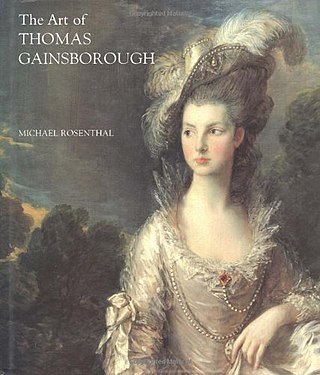
Michael J. Rosenthal is emeritus professor of the history of art at the University of Warwick. He is a specialist both in British art and culture of the eighteenth and early nineteenth centuries, and the arts of early colonial Australia.

Portrait of Anne, Countess of Chesterfield is a large oil-on-canvas painting by the English portrait and landscape artist Thomas Gainsborough, completed between 1777 and 1778. It shows Anne Stanhope, wife of Philip Stanhope, 5th Earl of Chesterfield, sitting in a blue and while satin dress, sitting in a garden, and is one of the best known of Gainsborough's many portraits of English aristocrats.


















